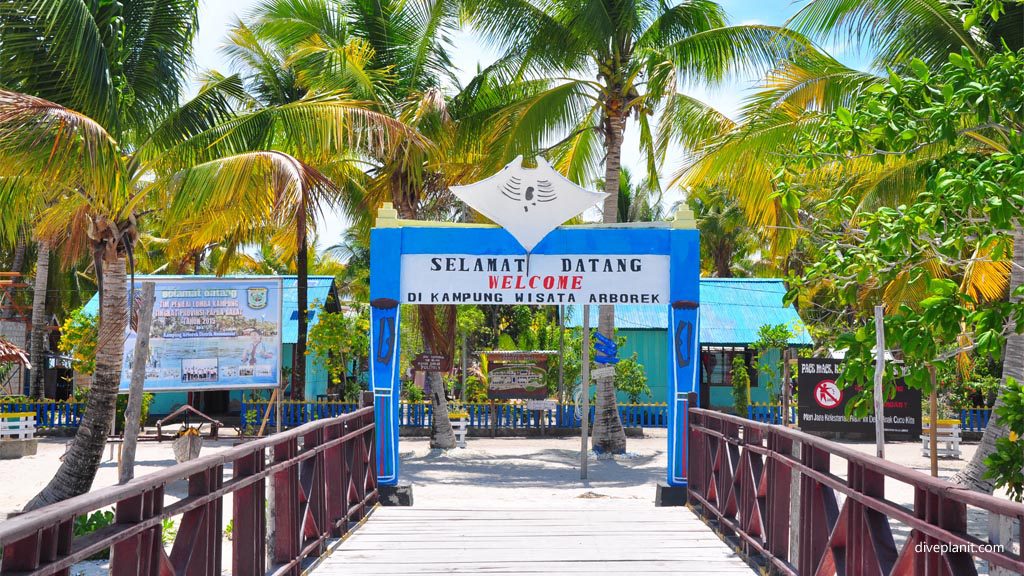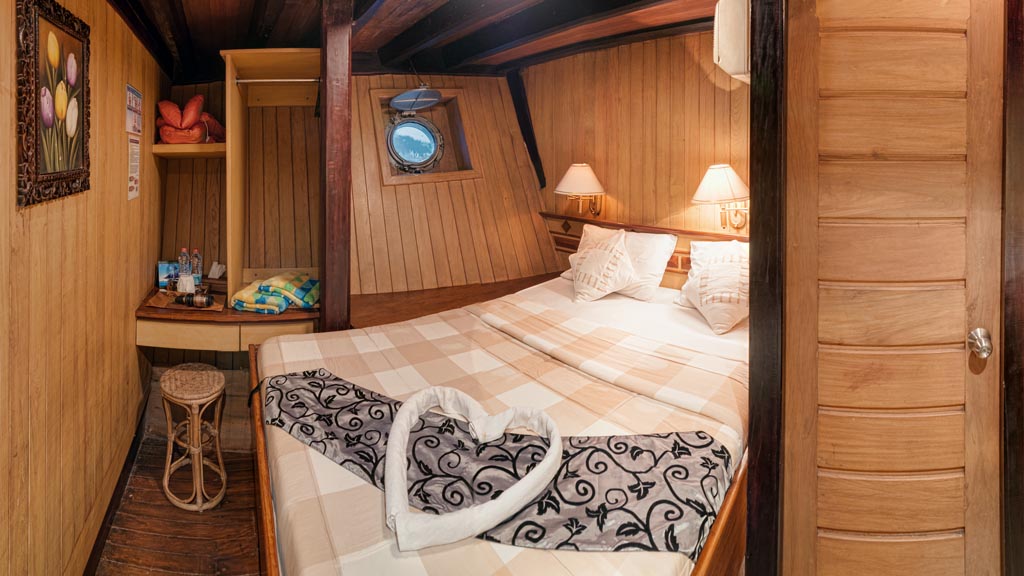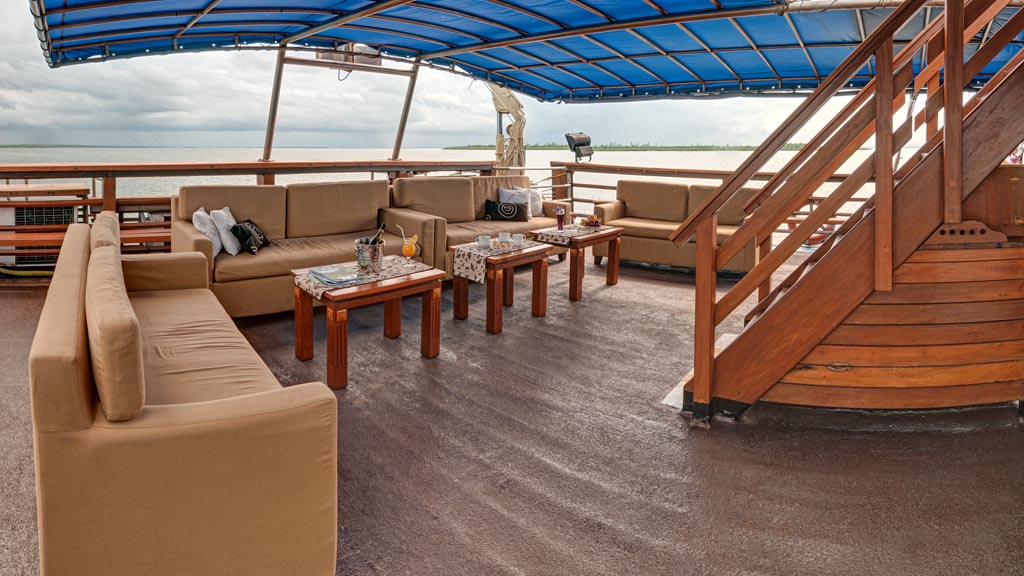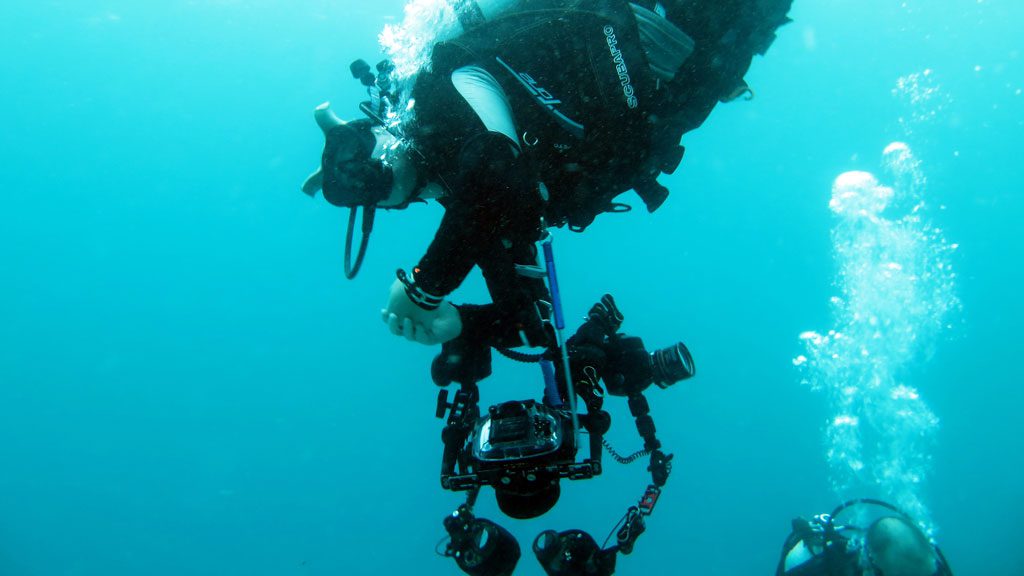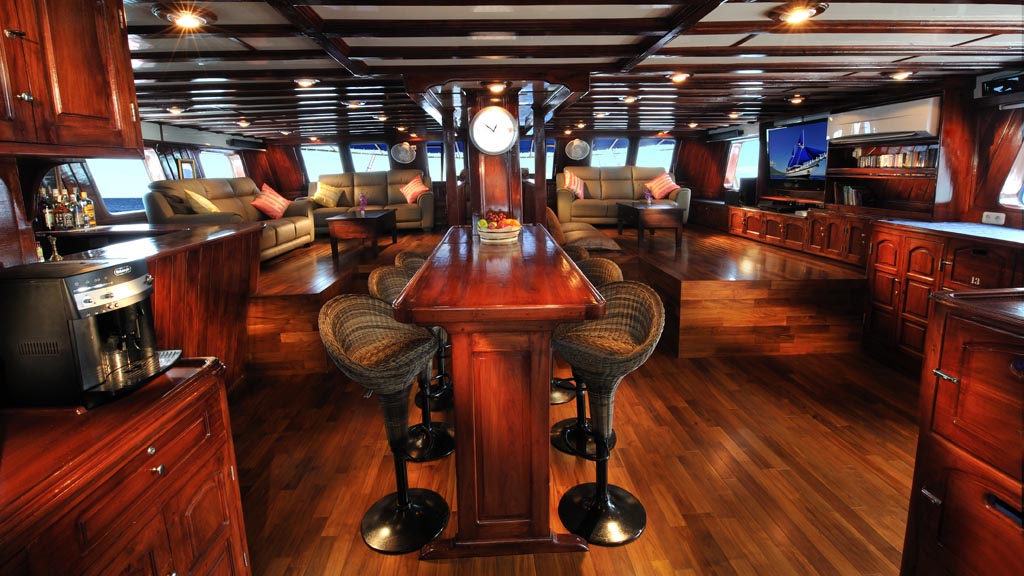At some dive destinations, the distance between dive sites lends itself to liveaboard diving whilst others, like Lembeh are perfect for resorts. But what about Raja Ampat – what’s best – liveaboard or resort? We discuss the pro’s and con’s.
Diving: the best of the best …
Many would argue that on a liveaboard you can dive all of a destination’s iconic sites in the one trip – which is a bit like a city bus tour where you get to see all of a city’s top sights. Whereas if you stay in one neighbourhood all the time, you don’t get to see as much – but what you do see, you see in greater detail (and perhaps experience some of the local culture).
If you’re visiting somewhere you’ll only get to once in your life – maybe a tour of the highlights is best for you? A tour of the highlights is also a good idea if you want to figure out which parts you want to return to and spend more time.
A big differentiator is the distance you can cover on a boat. The ability to visit remote islands and reefs.
Another great differentiator is the Liveaboard Transition Trip. These are the extended liveaboard itineraries at the end of the season that start in one region and end in another, visiting seldom-dived dive sites on the way. Over the next month or so, there are several such trips out of Raja Ampat as the windy season commences and boats move to Komodo or Lembeh. And then of course there are more when the next doldrums commence.
Accommodation: Cabin Fever?
It would be self-evident that resorts offer more space overall. Most cabins far more ‘compact’ than a resort room, and we’re not just talking about the ability to shower whilst sitting on the toilet. Resort bungalows have straight vertical walls with storage space and large flat surfaces for laying out and sorting out all that gear.
Conversely, your average Phinisi schooner cabin has more nooks and crannies than a Cornish fisherman’s cottage. By the end of the voyage, you’ve usually: a) managed to find a home for everything, and b) remembered where it is.
But spaciousness is more than where to put all your stuff. Is there enough space to get away from your ship mates? In a resort, you can just wander along the beach and find a quiet spot away from it all to relax for an hour or two.
On a boat, you may need to make sure there are enough sun decks, foredecks, aft decks and occasionally moon decks to get away from your fellow travellers … and usually one in particular (there’s always one).
One advantage of that compactness though is that on a liveaboard, nothing is more than a flight of stairs away from anything else. In some of the bigger resorts, it can be a ten minute round trip from the jetty to the room and back when you realise you left your computer on the table.
More diving!
Though many liveaboard schedules can pack in four or five dives a day, every day except port days; in a resort, often the house reef is open from 8am to 8pm.
And for those who like to snorkel as well as dive, a resort trumps on this one.
Food: Last apple in the barrel?
Another self-evident fact: a boat stocks up on provisions at the start of each trip, whereas a resort probably re-supplies every few days if not daily so logically, you would expect to be served higher quality food in a resort. But this is not always the case.
Some liveaboards (and some resorts) care more about food quality and presentation than others. What liveaboard cooks manage to achieve in those tiny galleys is always impressive, and I’ve never noticed a deterioration in the quality or freshness of the food over the course of the trip.
Whether you choose a liveaboard or resort be sure to check how much of the cuisine is eastern versus western, particularly if you have a strong preference for one or the other.
More than diving:
Though many of us would like to, you can’t dive 24/7 and some of like to see what attractions can be found above water as well as below.
At a resort you can opt a stroll along the beach, go for a snorkel or a paddle out to some remote corner of the island – a little exploration of the tropical paradise we pined for, whilst sitting at our desk in the office day-dreaming.
It’s nice to throw in a side trip, an excursion to the market, the local village or to see wild life. Side trips don’t need to be limited to the last day, indeed a voyage through an archipelago of islands lends itself to side trips. Both resorts and liveaboard operators realise that today’s travellers want an authentic experience of the destination and not just to see its seabed.
Who caters best Catering for divers with special needs (photographers)
If you’re one of those divers with ‘special needs’ – who has trouble walking because of the weight of the camera gear you’re carrying, or has difficulty talking, because of a vocabulary limited to either macro or wide angle, or perhaps are hard of hearing – deaf to the protestations of other divers who can’t actually see the reef because you are always in the way…
Quite often liveaboards cater for photographers better than resorts, with freshwater tubs ready for your gear when you get back on board and dedicated space to store camera equipment and fiddle with Photoshop or Lightroom before dinner. But some resorts are equally good, with larger tubs than will fit on a boat and camera rooms for cleaning equipment and downloading files.
Which is cheaper? Which is more luxurious?
There are liveaboards and resorts at either end of the spectrum, and usually the price you pay is a fair reflection of the service offering you’ll get. If a liveaboard seems expensive, you can usually (usually) expect a pretty decent offering. But also remember that liveaboard pricing includes all meals – resorts don’t always.
If you don’t mind sharing and can be flexible with dates, there are, of course a few seasonal bargains to be had. June through to September is low season in Raja Ampat and some resorts offer good deals. Misool Resort for example offers 25% off in their low low season, and Raja4Divers offer 50% off in their Under 30 Weeks in June.
Whichever way…
Whichever way you choose to dive Raja Ampat, you’re sure to enjoy it if you choose carefully as it is the biodiversity capital of the world. And, as most of us only get a week, maybe ten days if we’re lucky, it’s important we all get the holiday we came for – though don’t worry if you don’t see it all on the one trip.
As important, is that we leave behind a dive destination that’s no less rich for our visit.


